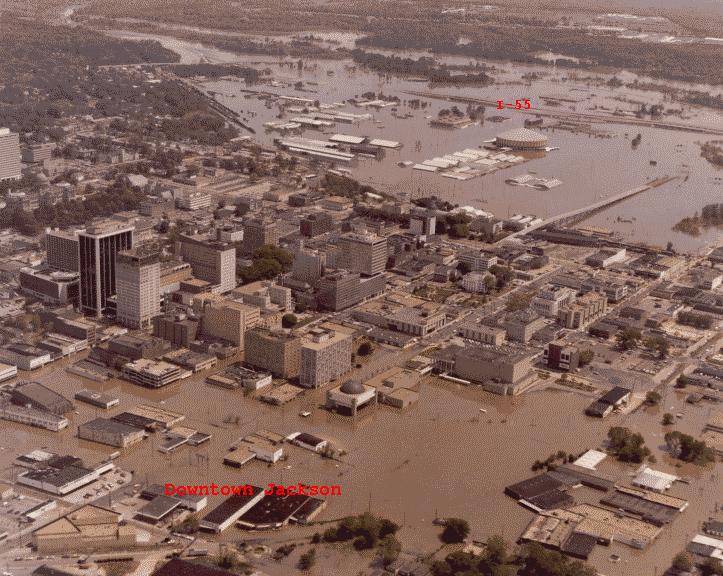Flooding
Floods are one of the most common hazards in the United States and may occur during any month of the year. A flood is defined when water overflows onto normally dry land. Not all floods are alike; they happen on different scales of space and time. The main types of floods are:

Source: Weather.gov
Did You Know?
In April 1979, heavy rain fell in central and east central Mississippi. Louisville, MS, recorded nearly twenty inches of rain, though a large part of the state recorded more than ten inches within two weeks. The heaviest rain fell in the headwaters of the Pearl River and within the Big Black River basin. River height gauges along and within the same watersheds set new all-time records. The Pearl River at Jackson crested at 43.28' on the 17th, flooding much of Jackson, and high water forced the evacuations of cities like Columbia and Monticello. You can learn more about of Mississippi’s impactful flooding events through NOAA’s Flood Safety page.